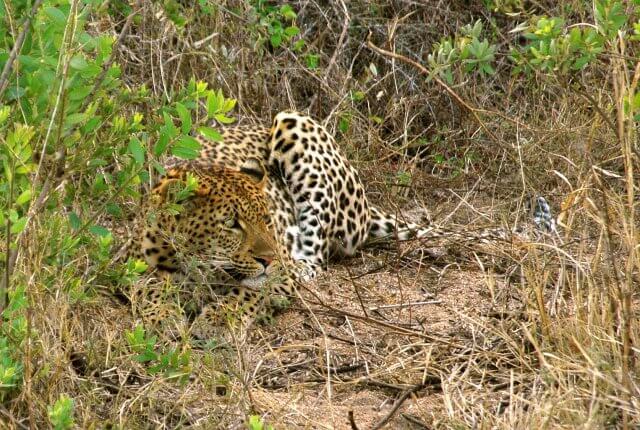10 Fascinating Facts About Leopards in the Wild
Facts About Leopards
 Leopards are one of the most majestic and elusive big cats in the world. With their stunning coat patterns and incredible hunting skills, they have captivated the imagination of humans for centuries. In this article, we will explore ten fascinating facts about leopards in the wild, shedding light on their behavior, habitat, and conservation status.
Leopards are one of the most majestic and elusive big cats in the world. With their stunning coat patterns and incredible hunting skills, they have captivated the imagination of humans for centuries. In this article, we will explore ten fascinating facts about leopards in the wild, shedding light on their behavior, habitat, and conservation status.
1. Leopards are Excellent Climbers
Unlike other big cats, leopards are incredibly agile climbers. They have the ability to haul their prey up into trees to protect it from other predators such as lions and hyenas. This unique behavior also allows them to rest and eat their meals undisturbed.
2. Leopards Have a Wide Range
Leopards are found in various habitats across Africa and Asia. They are incredibly adaptable and can thrive in diverse environments, including forests, grasslands, mountains, and deserts. This adaptability has contributed to their survival in the face of habitat loss and fragmentation.
3. Leopards are Nocturnal
Leopards are primarily nocturnal animals, meaning they are most active during the night. Their excellent night vision and stealthy nature make them highly effective hunters in the darkness. They rely on their keen senses to locate and stalk their prey.
4. Leopards are Solitary Animals
Leopards are solitary creatures, preferring to live and hunt alone. They have large territories that they mark with scent markings and claw marks on trees. These markings serve as a warning to other leopards to stay away.
5. Leopards are Incredibly Strong
Leopards are known for their immense strength. They can carry prey that is twice their own body weight up into trees. This strength is essential for their survival, as it allows them to secure their meals and avoid competition from other predators.
6. Leopards are Highly Skilled Hunters
Leopards are renowned for their hunting prowess. They are incredibly patient and stealthy, often stalking their prey for hours before launching a surprise attack. Their powerful legs and sharp claws enable them to bring down animals much larger than themselves.
7. Leopards Have a Varied Diet
Leopards are opportunistic hunters and have a diverse diet. They are known to prey on a wide range of animals, including antelopes, monkeys, birds, and even smaller predators like jackals. This adaptability allows them to survive in different habitats where food availability may vary.
8. Leopards are Threatened by Habitat Loss
One of the biggest threats to leopard populations is habitat loss. As human populations expand and encroach upon their territories, leopards are losing their natural habitats. Deforestation, urbanization, and agricultural expansion are all contributing to the decline of leopard populations.
9. Leopards are Endangered
Due to habitat loss and poaching, leopards are now listed as a vulnerable species on the IUCN Red List. Their populations have declined significantly in recent years, and urgent conservation efforts are needed to protect these magnificent creatures.
10. Conservation Efforts are Underway
Fortunately, there are several organizations and initiatives dedicated to conserving leopard populations. These efforts include creating protected areas, implementing anti-poaching measures, and raising awareness about the importance of leopard conservation. By supporting these initiatives, we can help ensure a future for leopards in the wild.
Summary
Leopards are truly remarkable creatures, with their climbing abilities, adaptability, and hunting skills. However, they face numerous threats, including habitat loss and poaching. It is crucial that we take action to protect these magnificent animals and their habitats. By supporting conservation efforts and raising awareness, we can help secure a future for leopards in the wild.
Read More About Leopards From Wikipedia



